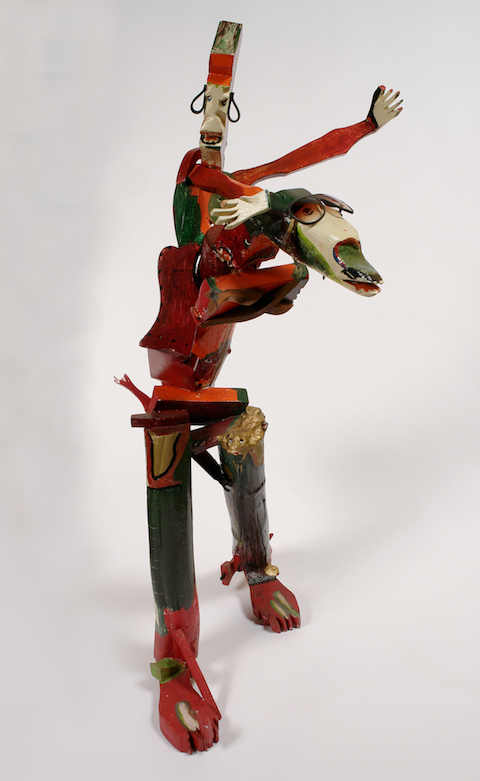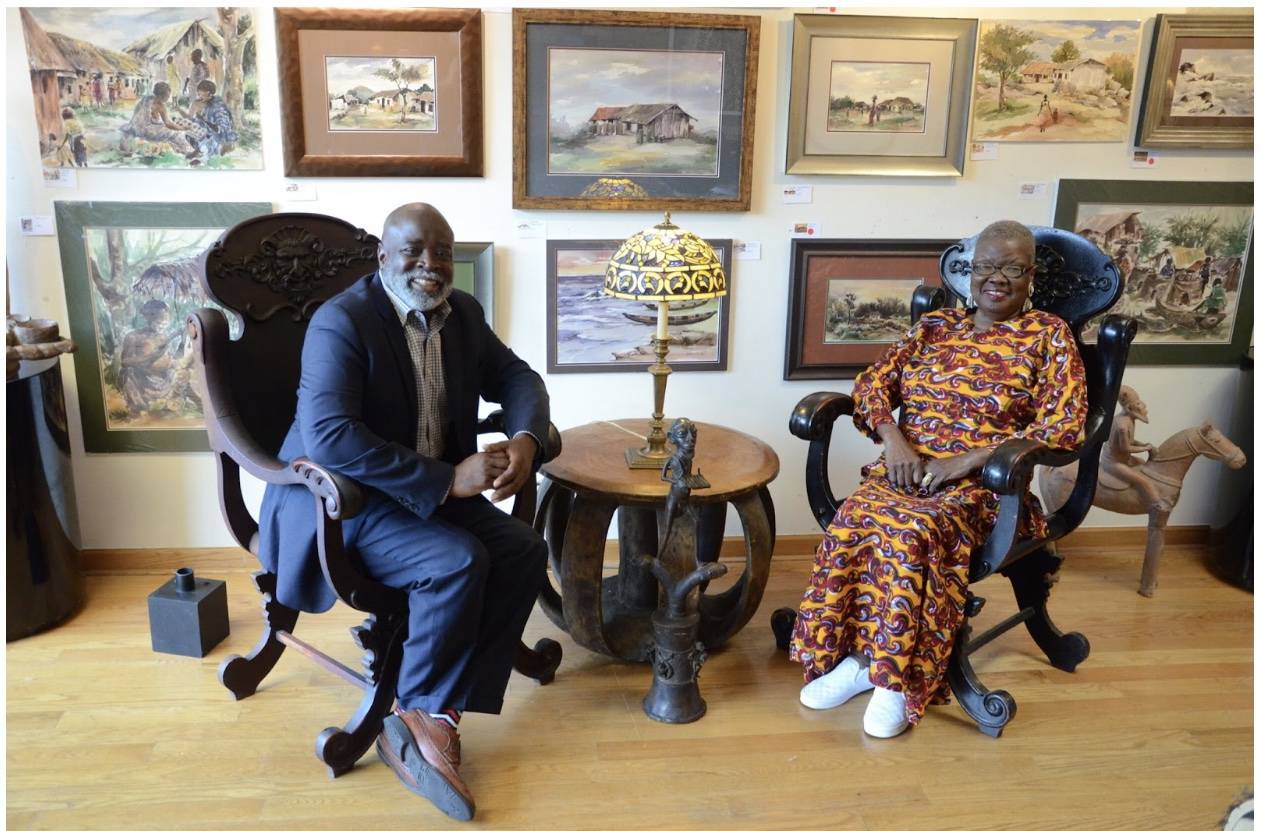
Derek Webster (American, 1934-2009). “Red Ryder,” 1987. Photo courtesy of Intuit.
One of the hardest things a critic can attempt to do is correct taste. While it is hoped that the artists themselves have confidence in their output, the scholars who seek to elevate those artists are frequently met with derision — and thanklessness at best.
Suppose you get past the reactionaries who’ve staked their careers on the old order. Suppose you have managed to facilitate a few unknowns into the canon. Then what? A well-received showing might help raise prices at an auction, but when a major gallery acquires an unsung hero’s work, and a tourist or a kid on a field trip leaves mesmerized, they’re not thinking of the curator. They’re thinking of the artist.
This is why declarations of what the work “represents” are so important.
Both literally and figuratively, the framing of art matters. So when the New York Times, in an unsigned review, stated that “the role of black folk art is to make the unbearable bearable,” the implication — that black artists who are poor or self-taught can only be viewed through a lens of transcending poverty and racism — resonates.
“When all else failed,” the author continues, “and society had given the thumbs-down signal once and for all, art was the restorative that made it possible to go on living.”
And in one fell swoop, self-taught artists of color are reduced to the subjects of slave hymns.
Though monumental in drawing interest towards outsider art, many viewers who were present for “Black Folk Art in America, 1930-1980” when it debuted at the Corcoran Gallery in Washington, D.C. acknowledged its double-edged nature. Marginalizing artists, as black or as folk, reduces their purview as subjects of an exhibit. This was a concern sorely realized by the exhibit showing at the Field Museum (rather than the Art Institute, or the Museum of Contemporary Art) when it came to Chicago.
The correction, therefore, needed to be corrected. And on this, the 25th anniversary of Intuit — an art space dedicated exclusively to outsider art — that reassessment has arrived.
“Post Black Folk Art in America 1930-1980-2016,” though significantly smaller than its predecessor, is wholly expansive. Any stereotypes of folk art as crude or one-dimensional are invited to be reassessed. Thornton Dial’s “Royal Flag, 1997-1998” possesses the texture and color density of the best of Jackson Pollock. Meanwhile, David Butler’s trio of sculptures — “Horse and Rider, 1983,” “Mermaid, 1983” and “Flying Elephant Whirligig” — would be at home next to anything by David Smith.
William Edmondson’s limestone sculptures “Angel” and “Two Doves” have an almost Athenian majesty. In their commitment to bright palettes and liberties with shape, Nellie Mae Rowe’s “Untitled, 1980” and Sam Doyle’s “Miss Lucky Food Stamp, 1983” — done in crayon and on sheet metal, respectively — have the obtuse vibrancy of an Archibald Motley painting.
This time around, though, the impulse to be referential would have been a problem. Regardless of the aspiration for gallery spaces to cater to specific functions, these spectacular and prolific artists should be allowed to stand on their own — not just as “folk artists,” and certainly not as the poor man’s versions of reputable “fine artists.” The current exhibit, miraculously, manages to advocate for inclusion while also preserving its subject’s autonomy.
Out of all the previously-mentioned artists, only Edmondson was featured in the original exhibit at the Field Museum. From reading the gallery introduction, you would assume that there’d be a distinction established between old and new. Yet unless you get up close and read the artist statements, you have no idea who was featured in the previous exhibit, whether the artwork showing is contemporary, or even the time period in which the dead artists were operative.
Injecting unrecognized disciplines into an assumed hierarchy can be contradictory, and this lopsided presentation — of lesser-known artists over more established ones — is representative of the entire exhibit. It has a nice effect: The unexpected presentation serves as the anchor that keeps the exhibit from drifting into irrelevance.
Furthermore, the “post” in front of “black” in the exhibit’s title is a thought-provoking double entendre. It could mean post-previous showing, but it could also mean post-black as an identification issue. The question remains, however, whether or not it’s possible to create left-of-center work within specific ethnic and class spheres without being tacked up as an example of “making the unbearable bearable.”
That you are allowed to move laterally within the space, stumbling across works blindly within a framework erected to call attention to the nuances of a very specific type of art, is an outstanding achievement. “The tom-tom cries and the tom-tom laughs,” Langston Hughes once wrote — his point being that “black aesthetics” should be expansive enough to contain a multitude of experiences.
With that in mind, we should acknowledge and thank the man responsible: the artist and curator, Mr. Faheem Majeed. Not content with merely dusting off a landmark to remind us of its greatness, he has opted to show us the entirety of his subject’s humanity, and has done them justice in the profoundest sense.





















